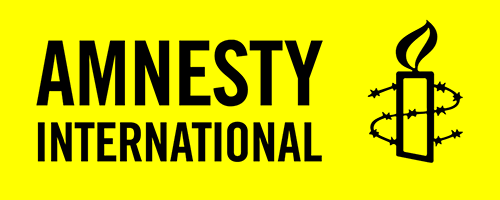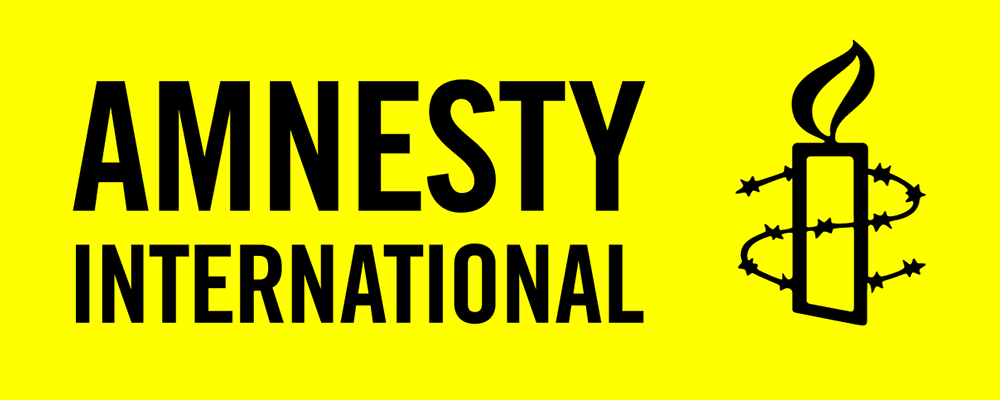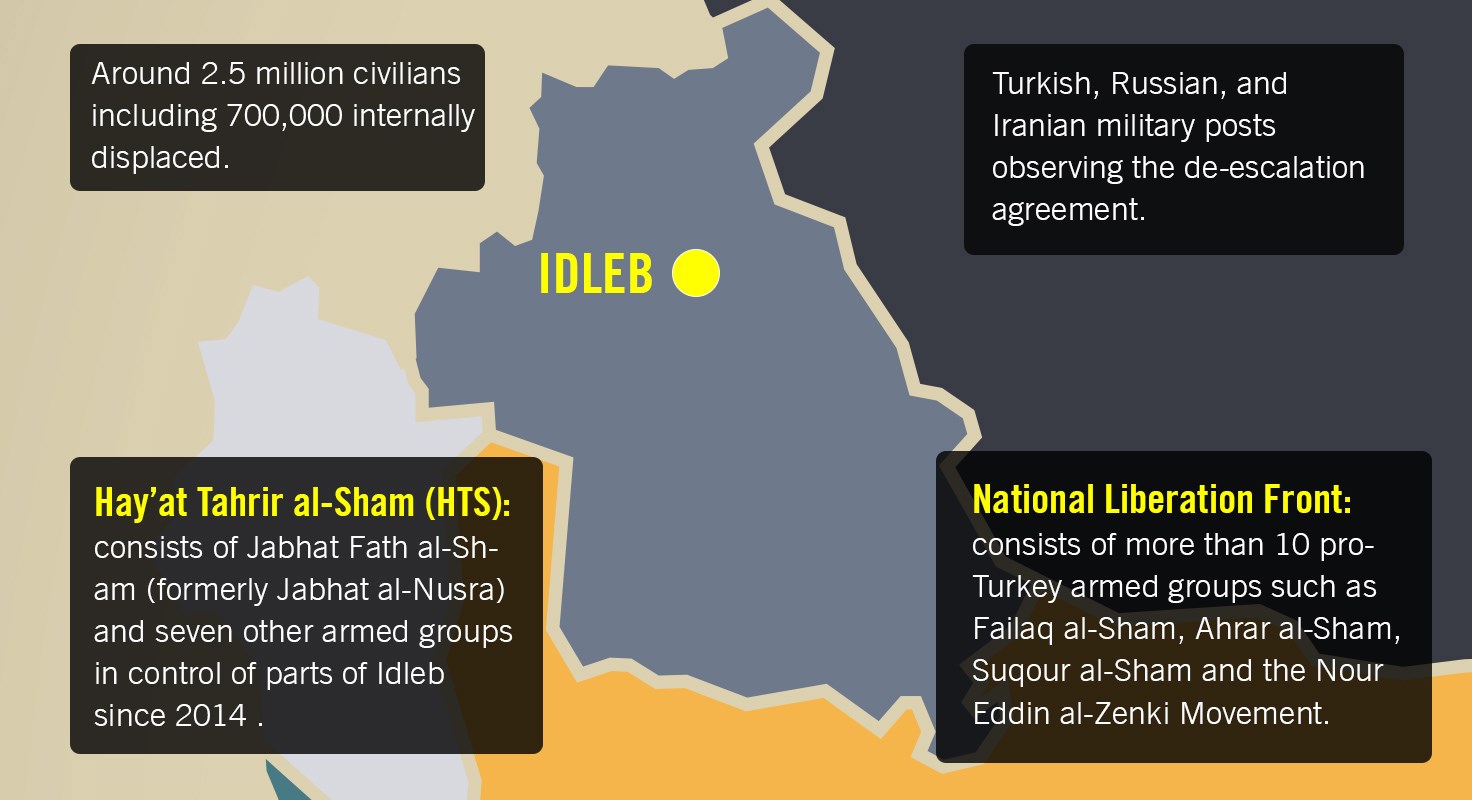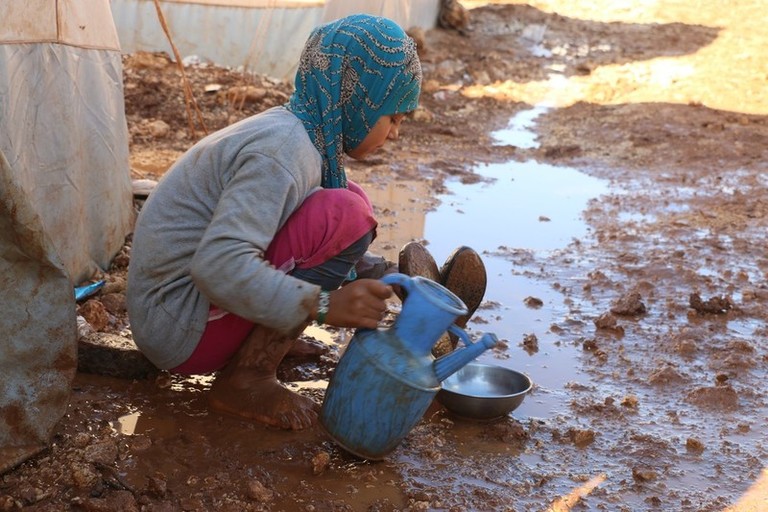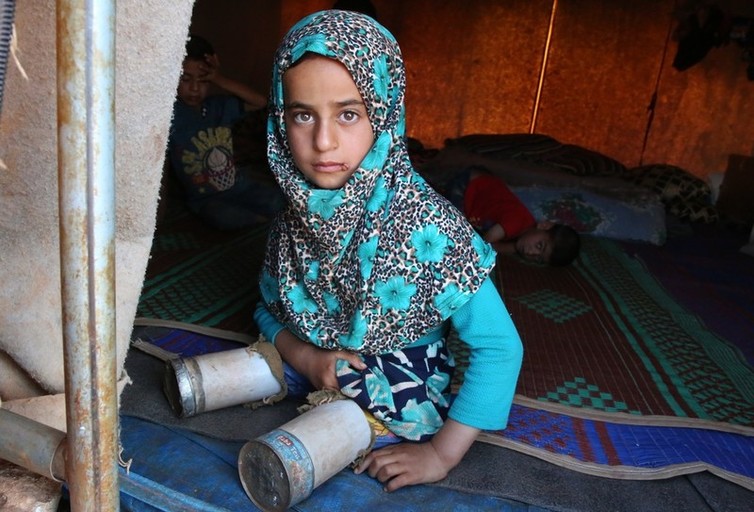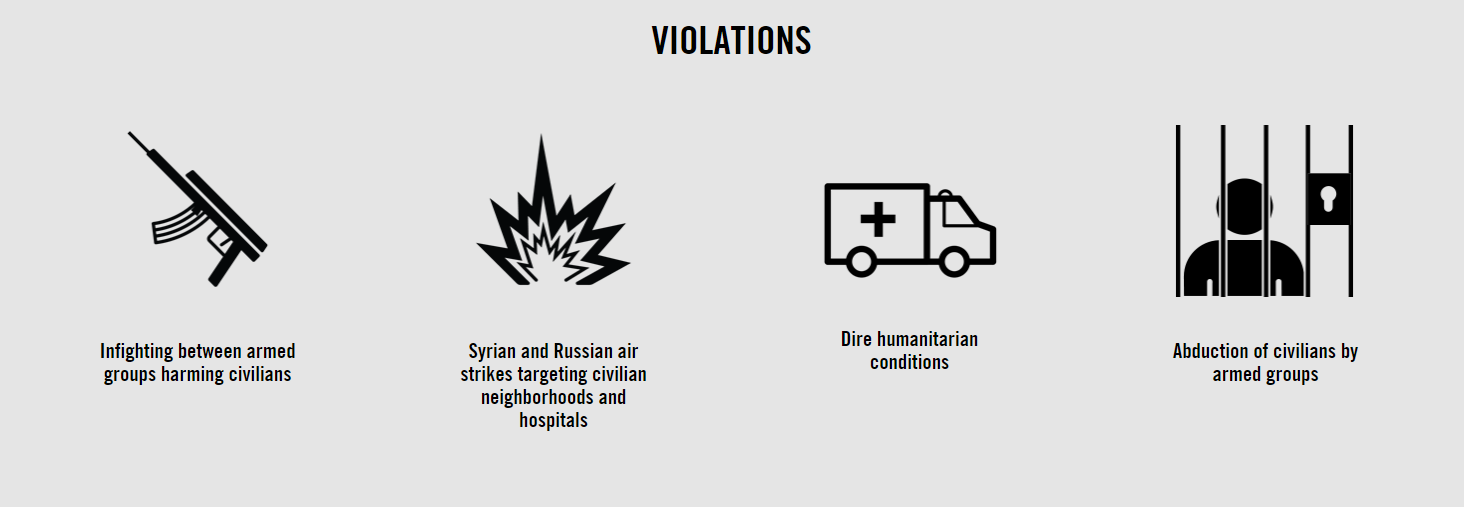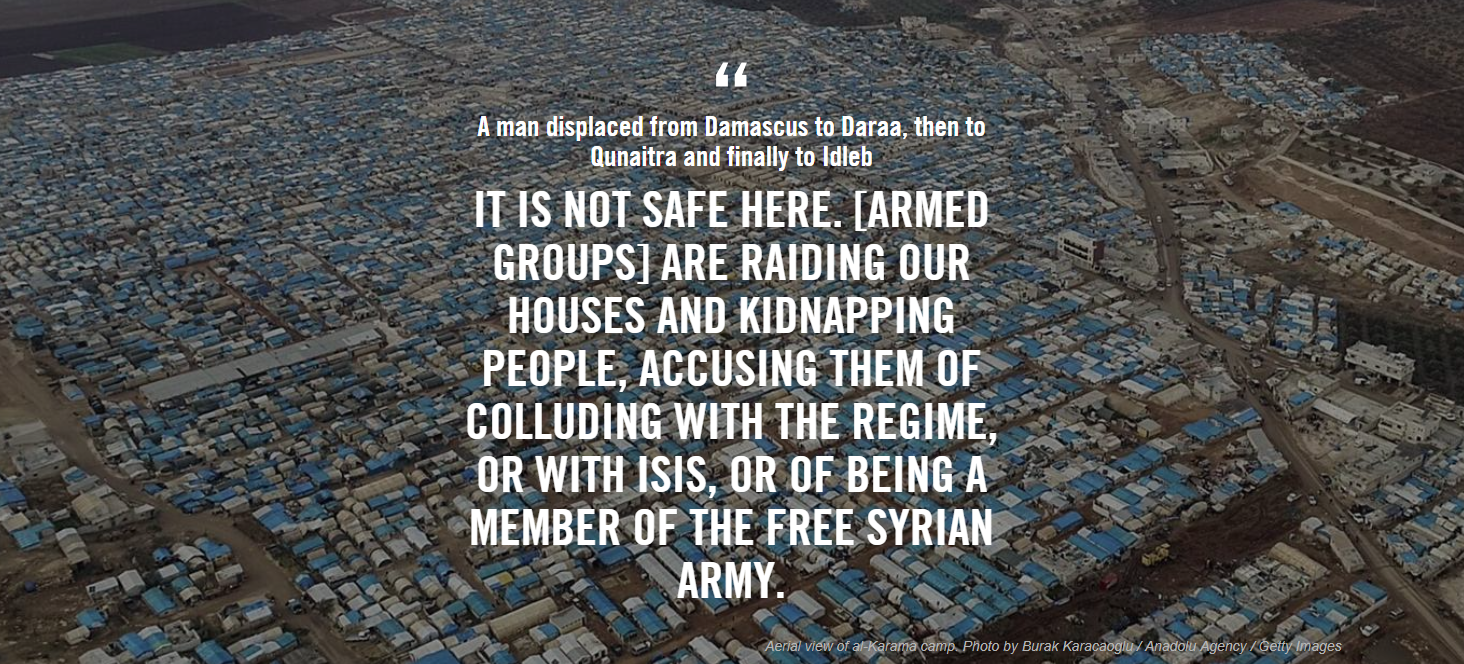Idleb, located in northwestern Syria along the border with Turkey, is the last major territory held by armed opposition groups. In March 2017, Iran, Turkey and Russia, the three sponsors of the Astana meetings, designated Idleb as de-escalation zone and established military observation posts to ensure that the Syrian government and armed opposition groups would comply with the ceasefire. Since January 2018 however, Syrian government forces conducted several unlawful air and ground attacks including a chemical attack that targeted the town of Saraqeb on 5 February 2018, killing at least six people and leaving 11 in need of emergency treatment. In addition, hundreds of civilians have been killed in car bombs and infighting between armed opposition groups.
Since 2011, 700,000 people have sought refuge in Idleb fleeing the violence in other parts of Syria; others were displaced, in some cases forcibly displaced as part of evacuation deals reached between the Syrian government and armed opposition groups, including in Homs, Aleppo, Eastern Ghouta and Daraa. As a result, Idleb’s population has reached 2.5 million, with many internally displaced people living in camps and relying on cross-border aid from Turkey. In July 2017, Turkey closed its borders with Idleb following the capture of the province by the armed opposition group Hay’at Tahrir al- Sham, resulting in the temporary suspension of humanitarian aid.
In July 2018, Iran, Turkey and Russia agreed to avoid a large-scale military offensive on Idleb. However, ominous statements by the Syrian and Russian governments indicate that a military offensive might be imminent. Given the siege and starvation tactics used repeatedly by the Syrian government against the civilian population in all of its major military offensives to capture territory from armed groups, the fate of millions of civilians in Idleb is now at risk.
